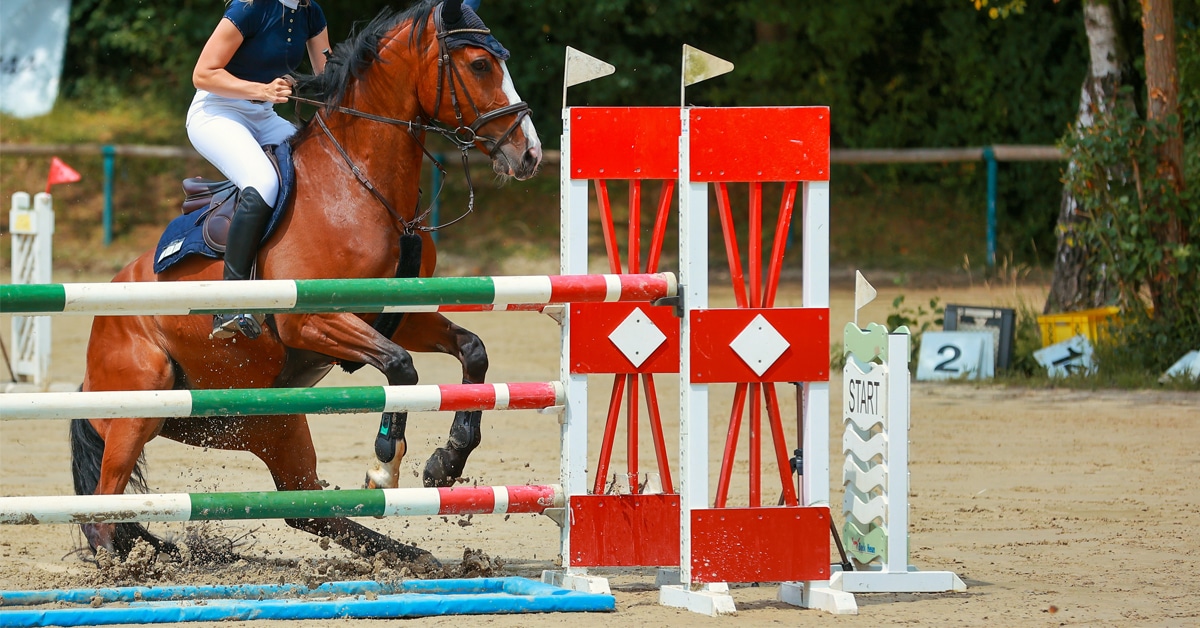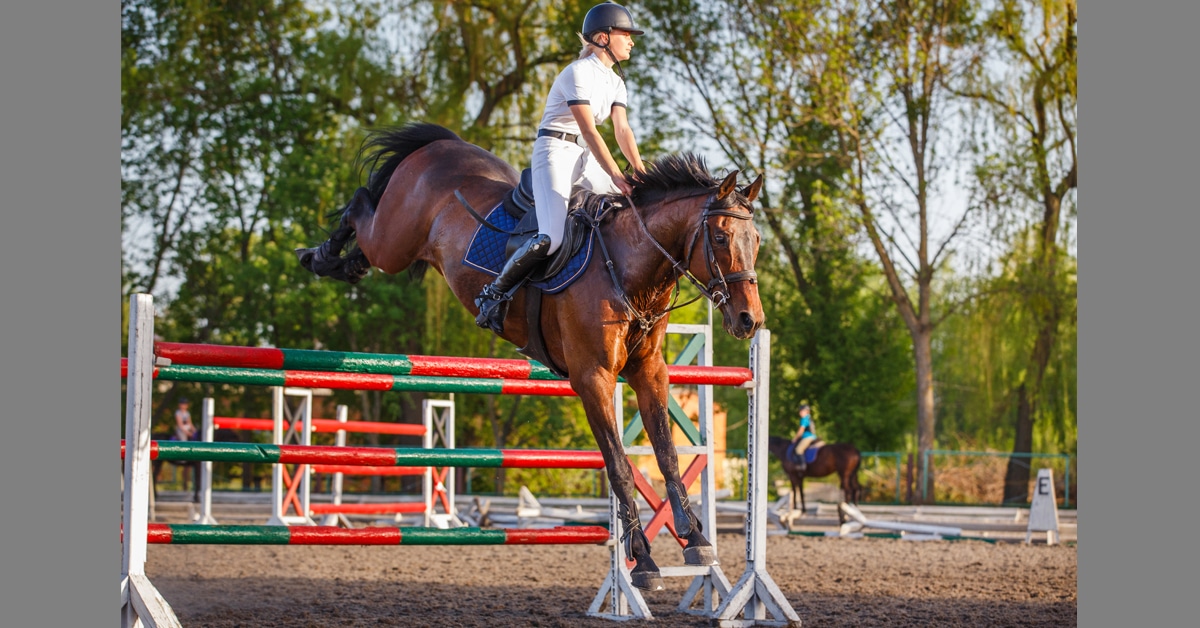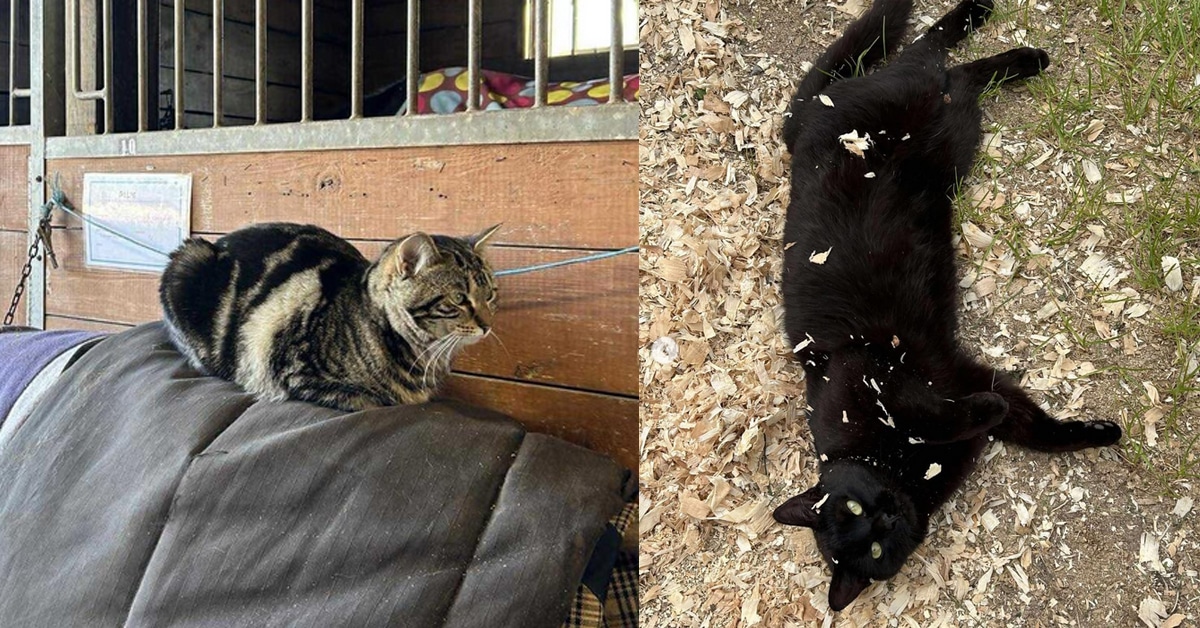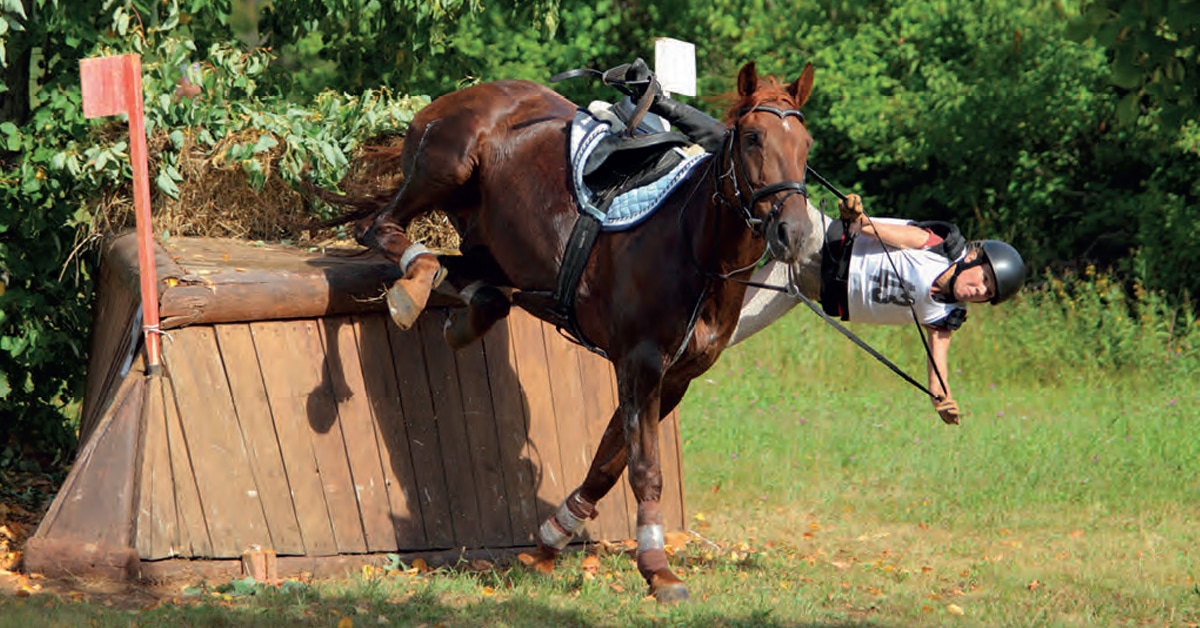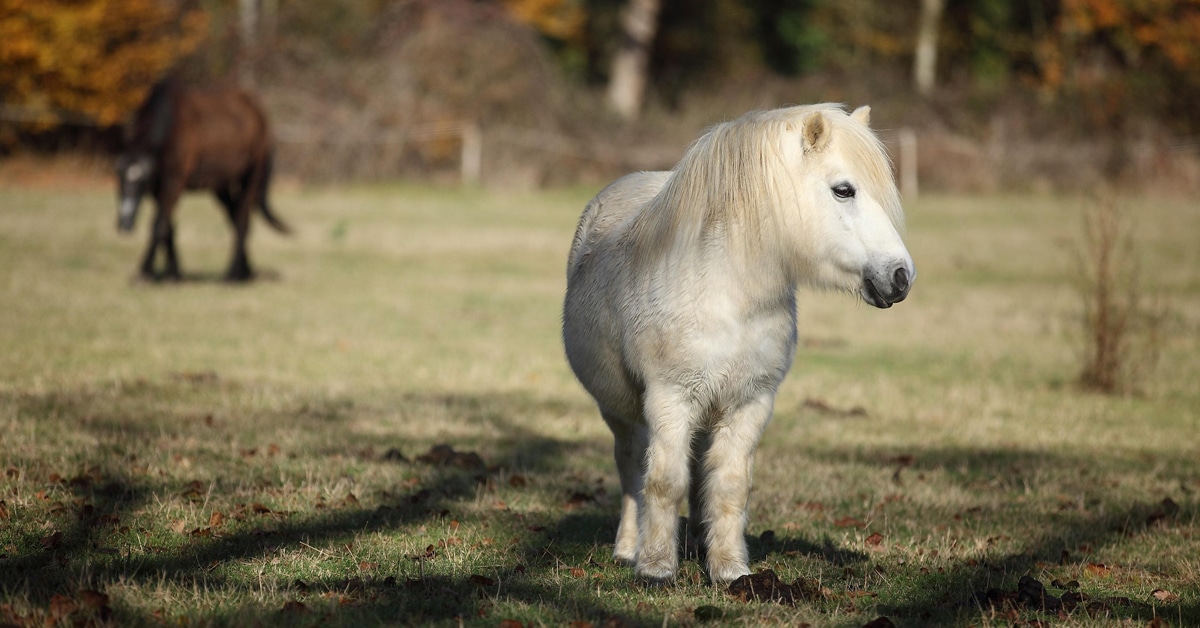Assessing your horse’s fitness through monitoring vital signs is an integral part of day-to-day training and care, says veterinarian Dr. Art King of Fort Erie, ON, who often officiates at high-level endurance competitions. “Many potentially serious conditions can be detected at an early stage by this simple series of checks.”
The good news is that you don’t need a lot of equipment or time: a stethoscope, a thermometer (ideally one with a clip attached), and a watch with a second hand will help you gather all the information you need.
Preparation and Overview
King recommends tying the horse or having someone hold it, and then start your fitness check by inserting the thermometer into the horse’s rectum and clipping it to the animal’s tail. “It takes time for the thermometer to indicate the temperature, so you will save time overall by doing this,” he explains.
Now do a quick overview of your horse’s appearance. Is the hair coat sleek or dull? Is he lethargic or alert? Is he overweight or underweight (you should be able to feel his ribs but not see them; see Henneke body condition chart on following page). Can you see any sores or abrasions, especially around the areas where the bit, bridle, girth, or blanket come in contact with the skin, or in the saddle area?
Dr. Brianne Henderson of the Cheltenham Veterinary Centre in Caledon, ON, says this is also a good time to check the horse’s eyes. “There are many reasons why an eye becomes painful and all of them require rapid veterinary attention. Horses will “squint” with a painful eye. Tearing, light sensitivity, and discharge are also signs of pain and problems. Stand in front of the horse and compare the eyelashes on each eye: if the eyelashes seem to be pointing downwards more on one eye than the other, it could indicate pain.”
Mucous membranes
Next, advises King, lift the horse’s upper lip to check the mucous membranes. The surface of the gums should be a healthy pink colour – described by Henderson as “salmon or rose petal” – and slippery-feeling when touched. If they feel tacky or dry, the horse may be dehydrated. If they are pale in colour, yellowish, brick-red, blue, purple, or muddy, your vet should be contacted.
Press firmly on the gums, and when you release the pressure the tissue should blanch or turn white. Use your watch to time how long it takes for the pink colour to return, or just count “one Mississippi, two Mississippi.” Normal is fewer than 1.5 seconds; if it takes longer than two or three seconds, King warns there may be cause for concern, and you should stop exercising the horse and let him rest. Four seconds or longer means veterinary care may be needed.
Temperature
Time to remove the thermometer and see what it reads. Normal temperature for a resting horse ranges between 37-38°C, or 99-100.5°F, says Henderson. The temperature can fluctuate a bit throughout the day and may be slightly higher in hot weather, but significantly elevated temperatures are a concern that a fever is present and the horse may be fighting an infection. Be sure to wash the thermometer well before storing to prevent contamination.
Pulse
“Your horse’s heart rate is most easily taken from the left side, just behind the elbow,” advises Henderson. “The normal heartbeat sounds like ‘lub dub’ and that counts as one beat.” Use your stethoscope to hear it clearly. King recommends counting the beats for 15 seconds by your watch, then multiplying by four to get the rate per minute (it’s too easy to lose count if you try to count for the full minute). Rates of 25 to 40 beats per minute are normal in resting horses, he explains.

If you don’t have a stethoscope handy for taking the pulse rate, find the maxillary artery where it crosses the jawbone. It should feel strong and regular. Count for 15 seconds and multiply by four to get the beats per minute.
(Donna Marie West photo)
Henderson adds, “You need to know your horse. If your horse’s pulse is normally 30 beats per minute, and you’re concerned that he seems a bit ‘off’ so you check his pulse and it is 40 beats per minute, that’s a significant increase and should be checked out, even though it is within the normal range.”
Gut Sounds
While you have the stethoscope out, move it back to the horse’s belly (behind the last rib) and listen. Hear those bubbling, gurgling sounds? That’s normal digestion going on, and a good sign. If instead you hear pinging or ringing sounds, or no sounds at all, and the horse is showing discomfort, you should follow up with your veterinarian. Henderson recommends checking all four quadrants of the gut: the top and bottom of both the left and right flanks.
Respiration
When your horse is standing quietly, watch his flank and count the number of times it moves out (inhaling). Normal respiration is between eight and 12 breaths per minute. “The breaths should be slow and steady, with no nostril flare or visible effort,” says Henderson.
A Pinch of Skin
Gently pinch or pull up a bit of the skin on the horse’s point of shoulder using your thumb and forefinger, then let go. The skin should “snap back’ almost immediately; if it takes longer than two seconds it can be a sign of dehydration. You can also use the horse’s upper eyelid for this test. Henderson warns that trying to do this pinch test on the middle of the horse’s neck can be misleading. Because there is a lot of fat under the skin in this area, the skin will go back more slowly and may cause you to think he’s dehydrated when he isn’t.
Recovery
Perhaps the best test of fitness is how quickly your horse recovers from exercise. Check his heart rate before you begin your ride and then again when you are done. After moderate exercise, your horse should recover to its normal rate within 10 minutes; if it takes longer than 20 minutes, you may need to focus on increasing his fitness with a regular graduated exercise program.
For more intense exercise, King says that the heart rate should ideally be below 68 beats per minute within ten minutes of stopping. If it takes more than 10 minutes, but less than 30, he’d be cautious. If the heart rate is still at 69 beats per minute or faster half an hour after stopping the intense workout, consult with your veterinarian about adjusting your training program.
Henderson adds that because you don’t need a stethoscope, respiratory recovery rate is one of the easiest indicators for riders to use when training (although not quite as accurate as heart rate). After light exercise (walking), the horse’s respiration should return to normal within one or two minutes; after moderate exercise it may take five to 10 minutes. Horses exercising intensely, especially in high temperatures, may see respiration rates increase to as high as 120 breaths per minute. In a fit horse, that rate should decline to 40-50 breaths per minute within 10-15 minutes. In hot, humid conditions, however, following extended strenuous exercise such as the cross-country at a three-day event, the respiratory rate might remain higher than 80-100 breaths per minute for up to 30 minutes. In these cases, whole-body active cooling (hosing or sponging cool water, using cooling fans) is indicated to aid recovery.
It is a good idea to check your horse’s vital signs regularly, ideally once a week or whenever you detect a change in behaviour, eating habits, or energy levels. Knowing your horse literally inside and out can ensure that you are able to identify trouble early and initiate veterinary help quickly.
HENNEKE SCALE
1. Poor
Extremely emaciated; no fatty tissue; vertebrae, ribs, tail head, and bones of withers, shoulder, and neck are visible
2. Very Thin
Emaciated; slight tissue cover over bones; vertebrae, ribs, tail head, and bones of withers, shoulder, and neck are visible
3. Thin
Slight fat cover over body; individual vertebrae and ribs no longer visibly discernible; withers, shoulders, and neck do not appear overly thin
4. Moderately Thin
Ridge of spine and outline of ribs are visible; tail head may or may not be visible depending on the breed; withers, shoulders, and neck do not appear overly thin
5. Moderate
Spine and ribs cannot be seen, however ribs can be felt; tail head is spongy; withers, shoulders, and neck are rounded and smooth
6. Moderately Fleshy
Slight crease down spine; ribs and tail head feel spongy; fat deposits along withers and neck and behind shoulders
7. Fleshy
Crease down spine; ribs have fat filling between them; tail head spongy; fat deposits along withers and neck and behind shoulders
8. Fat
Apparent crease down spine; ribs difficult to feel; soft fat surrounding tail head; fat deposits along withers, behind shoulders, and on inner thighs; neck is large
9. Extremely Fat
Obvious crease down spine; patchy fat on ribs; bulging fat on tail head, withers, behind shoulders, and on neck; fat fills in flank and on inner thighs
VITAL SIGNS (RESTING ADULT HORSE)
| Normal Range | Cause for Concern | Urgent – Call Vet | |
| Temperature | 37-38°C (99-101 °F) | 38.6-39°C (101.5-102°F) | >39°C (102°F) |
| Pulse | 25-40 beats/min | 40-60 beats/min | >60-80 beats/min |
| Respiration | 10-24 breaths/min | >24 breaths/min | Any laboured breating, gasping |
| Mucous membranes | Healthy pink colour, moist | Dry, pale | Yellowish, purple |
| Capillary refill time | 2 sec or less | 2-4 sec | >4 sec |
| Gut sounds | Regular gurgling, growling, roars and wet tinkles | Frequent wet sloshing or very infrequent gurgling | Silence |
The Latest
